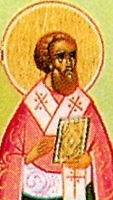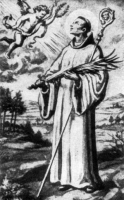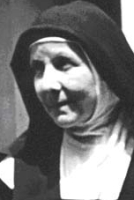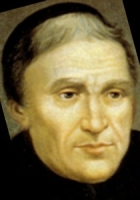Saint Anthony of Padua
பதுவை புனிதர் அந்தோனியார்
மறைப்பணிகளின் மறைவல்லுநர், அவிசுவாசிகளின் சம்மட்டி, கோடி அற்புதர்:
பிறப்பு: ஆகஸ்ட் 15, 1195
லிஸ்பன், போர்ச்சுக்கல்
இறப்பு: ஜூன் 13, 1231 (வயது 35)
பதுவை நகர், இத்தாலி
ஏற்கும் சமயம்:
ரோமன் கத்தோலிக்க திருச்சபை
முக்திபேறு மற்றும் புனிதர் பட்டம்: மே 30, 1232
திருத்தந்தை ஒன்பதாம் கிரகோரி
முக்கிய திருத்தலங்கள்:
புனிதர் அந்தோனியார் திருத்தலம், பதுவை, இத்தாலி
நினைவுத் திருவிழா: ஜூன் 13
பாதுகாவல்:
அமெரிக்க பழங்குடியினர் (American Indians); பிரேசில் (Brazil); முதியோர்; நற்கருணை பக்தி (Faith in the Blessed Sacrament); மீனவர்; அறுவடை; குதிரைகள்; தொலைந்துபோன பொருட்கள்; தொலைந்துபோன மக்கள்; தொலைந்துபோன ஆன்மாக்கள்; தபால்; மாலுமிகள்; ஒடுக்கப்பட்டோர்; வறியவர்; போர்ச்சுகல் (Portugal); கர்ப்பிணிகள்; பசியுறுவோர்; பயணம் செய்வோர்; பரிசல்காரர்; லிஸ்பன் (Lisbon); ஃபிரான்சிஸ்கன் சபையினர் கையகப்படுத்தியுள்ள புனித பூமி (Franciscan Custody of the Holy Land); கப்பல் பணியாளர்கள் (Mariners); டிகுவா இந்தியர்கள் (Tigua Indians); சுற்றுலா பணிப்பெண்கள் (Travel hostesses); பயணிகள் (Travellers); டுபுரன் (Tuburan); செபு (Cebu); எதிர்-புரட்சியாளர்கள் ( Counter-Revolutionaries); சேன் அன்டோனியோ டி பதுவா பங்கு (San Antonio De Padua Parish); டைடை (Taytay) (Rizal).
“ஃபெர்னாண்டோ மார்ட்டின்ஸ் டி புல்ஹோஸ்” (Fernando Martins de Bulhões) எனும் இயற்பெயர் கொண்ட, பதுவை புனிதர் அந்தோனியார், போர்ச்சுகீசிய கத்தோலிக்க குருவும், “ஃபிரான்சிஸ்கன்” (Franciscan Order) சபை துறவியும் ஆவார். இவர் “லிஸ்பன்” (Lisbon) நகரில் பிறந்தாலும் 'பதுவைப்பதியர்' என்றே அழைக்கப்பட்டார். இதற்குக் காரணம், இத்தாலி நாட்டிலுள்ள “பதுவை” (Padua) நகரில்தான் இவர் தமது கடைசி நாட்களைக் கழித்துள்ளார். அவர் மரித்ததும், அடக்கம் செய்யப்பட்டதும் அங்குதான். ஆகவேதான் “பதுவைப் பதியர்” என அழைக்கப்படுகின்றார். இவரது புனித வாழ்வும், கூரிய நுண்ணறிவும், விவிலிய ஆர்வமும் இவர் மரித்த மறு வருடமே இவருக்கு புனிதர் பட்டம் பெற்றுத் தந்தது.
வாழ்க்கைக் குறிப்பு:
இளமை:
ஐரோப்பாவிலுள்ள போர்ச்சுக்கல் (Portugal) நாட்டின் தலைநகரான லிஸ்பன் (Lisbon) மாநகரிலே கி.பி. 1195ம் ஆண்டு, ஆகஸ்ட் திங்கள், 15ம் நாள் பிறந்தார். அவரது பெற்றோர்கள் “வின்சென்ட் மார்டின்ஸ்” (Vicente Martins), மற்றும் “தெரெசா பைஸ் டவேய்ரா” (Teresa Pais Taveira) ஆவர். இவர்களுக்கு முன்றாவதாகப் பிறந்த குழந்தையான இவர் கூரிய நுண்ணறிவு படைத்தவர் ஆவார்.
புனித அகுஸ்தீன் சபையில்:
ஆன்மீக குருவைக் கலந்தாலோசித்து புனித அகுஸ்தின் துறவற சபையில் சேர்ந்தார். ஊர் உறவினரை விட்டு விலகியிருப்பதே நலம் என்று உணர்ந்த ஃபெர்னாண்டோ தனது விருப்பத்திற்கிணங்க அதிபரின் அனுமதியின்படி, அப்போதைய போர்ச்சுகலின் தலைநகரான “கொயிம்ப்ரா” (Coimbra) என்னும் நகருக்குச் சென்று குருத்துவக் கல்வி பயின்றார். 1219ம் ஆண்டில் 24ம் வயதில் குருத்துவ அருட்பொழிவு பெற்றார்.
மொராக்கோவில் (Morocco) வேத சாட்சிகளாக மரித்த ஐந்து ஃபிரான்சிஸ்கன் சபையோரின் திருப்பண்டம், 1220ம் ஆண்டு, ஃபெப்ரவரி மாதத்தில் கொண்டு வரப்பட்டது. இதைப் பற்றி சிந்தித்த ஃபெர்னாண்டோ, தாமும் அவ்வாறே கிறிஸ்துவுக்காக வேத சாட்சியாக வேண்டும் என்று தணியாதத் தாகம் கொண்டார். எனவே கி.பி. 1221ம் ஆண்டு புனித அகுஸ்தீன் சபையை விட்டு விலகி, ஃபிரான்சிஸ்கன் சபையில் சேர்ந்தார்.
ஃபிரான்சிஸ்கன் சபையில்:
ஃபிரான்சிஸ்கன் சபையில் சேர்ந்தபோதுதான் ஃபெர்னாண்டோ என்ற பெயரை மாற்றி அந்தோனியார் மடத்தின் பெயரால் அந்தோனி என்ற புதிய பெயர் பெற்றுக்கொண்டார். சிறிது காலம் ஆப்பிரிக்காவிலுள்ள இஸ்லாமியருக்குப் போதிக்கச் சென்றார். உடல்நிலை சரியில்லாததால் மீண்டும் இத்தாலிக்கே திரும்பினார். போர்லி என்னுமிடத்தில் அதிபரின் வேண்டுகோளுக்கிணங்கி அங்குள்ள பேராலயத்தில் மறையுரையாற்றினார். அன்றுமுதல் அந்தோனியார் புகழ் பெற்ற பிரசங்கியானார். அதன்பின் பதுவை நகரில் திருமறை சார்ந்த பணிசெய்து மறையுரையாற்றினார். அவரின் மறையுரையை கேட்க ஆலயங்களில் இடம் கொள்ளவில்லை. கிறிஸ்தவ கோட்பாடுகளை விளக்கியும், அந்த நாட்களில் நிலவிய தப்பறைக் கொள்கைகளை எதிர்த்தும் ஆணித்தரமாகப் போதித்தார்.
தாம் வாழ்ந்த காலத்திலும், இறப்பிற்குப் பின்னும் கடவுள் அளித்த கொடையினால் அனேக புதுமைகள் செய்தார். இதனால் "கோடி அற்புதர்" என்ற சிறப்புப் பெயரைப் பெற்றார்.
அந்தோனியாரின் அதிசயப் பண்புகள் மற்றும் அவர் புரிந்த புதுமைகள் பற்றி பல நிகழ்வுகள் உள்ளன. ஒருமுறை, இவர் ரீமினி என்னும் கடற்கரை நகரில் போதித்ததைக் கேட்க சிலர் மறுத்தபோது, மீன்கள் நீரின் மேல் வந்து இவர் கூறியதைக் கேட்டுக் கொண்டிருந்தனவாம். இன்னொரு முறை யூதர் ஒருவர் இயேசு நற்கருணையில் இருப்பதை மறுத்தாராம். ஆனால் பட்டினி போடப்பட்ட அவரது கழுதை, அதற்குமுன் போடப்பட்ட புல்லைத் தின்னாமல் அந்தோனியாரின் கட்டளைக்குக் கீழ்ப்படிந்து நற்கருணையின் முன் மண்டியிட்டு ஆராதித்ததாம்.
மற்றுமொறு புதுமை:
இவர் வாழ்ந்த காலத்தில் கடவுளுடைய கிருபையால் இவர் செய்த புதுமைகளால் ஈர்க்கப்பெற்று இவரை நாடிவருவோர் எண்ணிக்கை அதிகமானதால் துறவியர்கள் மடத்தில் அமைதிக்குக் குந்தகம் ஏற்பட்டதாம். இதன் பொருட்டு மடத்தின் தலைமை குரு இவர் எண்ணிலடங்கா புதுமைகள் செய்ய தடைவிதித்தார். நாள் ஒன்றுக்கு 13 புதுமைகளுக்கு அதிகமாக புதுமைகள் செய்ய தடை விதித்து கட்டளையிட்டார். ஒருநாள், இவர் அன்றைய தினம் செய்யகூடிய 13 புதுமைகளையும் செய்து முடித்தபின்னர், மாலையில் வெளியே உலாவச் சென்றார். அப்பொழுது உயரமான கட்டடத்திலிருந்து ஒருவர் தவறி விழுந்த வேளையில் "அந்தோனியாரே என்னை காப்பாற்றும்" என்று உதவிக்குரல் எழுப்ப, இவர் அவரை வானத்திலேயே அந்தரத்தில் தொங்க வைத்ததாகவும், அருகில் இருந்த மடத்திற்கு சென்று தலைமை குருவிடம் 14வது புதுமை செய்ய அனுமதி பெற்று அவரை தரையில் பத்திரமாக இறக்கினாராம். மற்றொரு புதுமையில், ஒரே நேரத்தில் அந்தோனியார் இரு இடங்களில் போதித்ததாகவும், புதுமைகள் செய்ததாகவும் செய்தி உண்டு.
புனைவுகளை நீக்கிவிட்டு, வரலாற்று நிகழ்வுகளை மட்டுமே பார்த்தாலும் புனித அந்தோனியார் எண்ணற்ற புதுமைகள் செய்தார் என்பது உண்மையே என்று அவரது அதிகாரப்பூர்வமான வரலாறு கூறுகின்றது.
இறப்பு:
கி.பி. 1231ம் ஆண்டு, பல ஊர்களில் மறையுரை ஆற்றியதாலும், கடும் தவ முயற்சிகளாலும், நோய்வாய்ப்பட்டார். அதே ஆண்டில் ஜீன் மாதம் 13ம் நாள் இறுதி திருவருட்சாதனங்களைப் பெற்றபின் இறந்தார். அப்போது அவருக்கு வயது 35. அதன் பின் 336 ஆண்டுகளுக்குப் பின் அவருடைய கல்லறையானது தோண்டப்பட்டபோது, அவருடைய நாக்கு மட்டும் அழியாமல் இருப்பது கண்டுபிடிக்கப்பட்டது. அந்த நாக்கு இன்றும் பதுவை நகர் கோவிலில் பாதுகாக்கப்பட்டு வருகிறது.
அந்தோனியார் இறந்து ஓராண்டு நிறைவதற்கு முன்னரே அவர் புனிதர் என்று திருச்சபையால் அறிவிக்கப்பட்டார்.
1946ம் ஆண்டு, வணக்கத்துக்குரிய திருத்தந்தை 12ம் பயஸ் (Venerable Pope Pius XII), புனிதர் அந்தோனியாரை திருச்சபையின் மறைவல்லுநர்களில் ஒருவராக அறிவித்தார்.
Also known as
• Antonio da Padova
• Evangelical Doctor
Profile
Anthony's wealthy family wanted him to be a great nobleman, but for the sake of Christ he became a poor Franciscan. Priest.
When the remains of Saint Berard and his companions, the first Franciscan martyrs, were brought to be buried in his church, Anthony was moved to leave his order, enter the Friars Minor, and go to Morocco to evangelize. Shipwrecked at Sicily, he joined some other brothers who were going to the church in Portiuncula. Lived in a cave at San Paolo leaving only to attend Mass and sweep the nearby monastery. One day when a scheduled speaker failed to appear, the brothers pressed him into speaking. He impressed them so that he was thereafter constantly travelling, evangelizing, preaching, and teaching theology through Italy and France.
A gifted speaker, he attracted crowds everywhere he went, speaking in multiple tongues; legend says that even the fish loved to listen. Miracle worker. One of the most beloved of saints, his images and statues are found everywhere - though none of them portray him as a heavy-set man, which some reports claim he was. Proclaimed a Doctor of the Church on 16 January 1946.
One source of the well-known patronage for the recovery of lost objects comes from a legend that, long after Anthony's death, his old prayer book was kept as a treasured relic, and one day it disappeared. People prayed for help in finding the lost item, a novice found it and returned it; he later admitted that he had "borrowed" the book and returned it after receiving a vision of an angry Anthony.
Born
1195 at Lisbon, Portugal
Died
• 13 June 1231 of natural causes
• buried on the Tuesday following his death in the church of Santa Maria Maggiore, Padua, Italy
• legend says that all the sick who visited his new grave were healed
Canonized
30 May 1232 by Pope Gregory IX at Spoleto, Italy
Blessed Marianna Biernacka
Also known as
Marianna Czokala
Additional Memorial
12 June as one of the 108 Martyrs of World War II
Profile
Lifelong lay woman in the diocese of Lomza, Poland. She had little education; she may have been able to read a little, but she could not write. Raised in the Orthodox church, she converted to Catholicism at age 17. Married to Ludwik Biernacki, a farmer, at age 20. Mother of six, only two of whom survived infancy, her daughter Leokadia, and her son Stanislaw. Widowed, she moved in with Stanislaw and helped raise her grandchildren, in part by setting an example of personal piety.
When the Nazis and Soviets divided Poland between them in World War II, Marianne's town came under German control. When local resistance groups did anything to fight back against occupying forces, the Nazis would have reprisal executions, rounding up random citizens and killing them as a warning to the resistence. On 1 June 1943 the Nazis arrested Marianna's son Stanislaw and his wife Anna, who was pregnant, and put them in the group to be murdered. Marianna pleaded to take the girl's place, and Anna was freed; Marianna asked to take one thing with her - a rosary. The mother and son were briefly imprisoned and then executed. Martyr.
Born
1888 in Lipsk, Podlaskie, Poland as Marianna Czokala
Died
shot by firing squad on 13 June 1943 in Naumovichi (a.k.a. Naumowicze), Hrodzyenskaya voblasts', Belarus
Beatified
13 June 1999 by Pope John Paul II
Saint Tryphillius of Leucosia
Also known as
Triphyllius, Trifilio, Trifillo
Profile
Educated in Constantinople. Worked as a lawyer. Convert to Christianity. Spritiual student of Saint Spyridon of Cyprus. Bishop of Leucosia (modern Nicosia), Cyprus. Supported Saint Athanasius of Alexandria in his opposition to Arianism; Saint Athanasius praised Tryphillius for his adherence to orthodox Christianity, so the Arians turned their attacks against him. He lived with no pomp or splendor, and preached every day. Saint Jerome considered him one of the most eloquent Church figures of his day, and he was particularly noted for his commentary on the Song of Songs.
Born
Rome, Italy
Died
370 of natural causes
Saint Victorinus of Assisi
Also known as
Vittorino
Profile
Chosen bishop of Assisi, Italy by Pope Fabian in the mid-3rd-century. Martyred with several companions outside of Assisi during the persecutions of emperor Gordian III.
Born
Assyria
Died
• beheaded in the 3rd century beside a bridge over the River Tescio outside Assisi, Italy; the bridge is now known as the Ponte San Vittorino in his honour
• the Monastero di San Vittorino was built over the site of the execution, and his relics were enshrined in it
• relics later enshrined under the high altar in the Abbazia di San Pietro
• relics, consisting of bones and blood-soaked linen, enshrined in a side altar in 1642
• relics enshrined behind a grating at the high altar in 1954
Saint Aventino of Arbusto
Also known as
• Aventino of Larboust
• Aventine of...
Profile
Hermit in the Arbusto Valley of the Pyrenees region of France. He spent most of his time in prayer, but would sometimes come down to the villages to preach. Martyred by Moors for preaching Christianity.
Died
• early 9th century in the Arbusto Valley of the Pyrenees region of France
• body hidden by his killers
• relics miraculously discovered in the 12th century and in enshrined in a local church
Saint Augustinô Phan Viet Huy
Also known as
• Augustine Huy Viet Phan
• Augustine of Huy
Additional Memorial
24 November as one of the Martyrs of Vietnam
Profile
Lifelong layman in the apostolic vicariate of East Tonkin. Soldier. Worked to help the foreign missionaries. Worked, tortured and died with Saint Nicolas The. Martyr.
Born
c.1795 in Ha Linh, Nam Ðinh, Vietnam
Died
sawn in half on 12 June 1839 in Thua Thiên, Vietnam
Canonized
19 June 1988 by Pope John Paul II
Blessed Anthony of Ilbenstadt
Profile
Anthony heard Saint Norbert of Xanten preach in Nivelles, Belgium c.1120, and was so impressed that he gave away everything to become Saint Norbert‘s 3rd spiritual student. Studied with Blessed Hugh of Fosse and Blessed Evermod of Ratzeburg. One of the first Premonstratensian monks. Canon of the motherhouse in Premontres, Laon, France. Prior of the Ilbenstadt monastery in Wetterau, diocese of Mainz, Germany.
Born
c.1100 in Nivelles, Brabant (in modern Belgium)
Died
15 January c.1149 of natural causes
Saint Eulogius of Alexandria
புனிதர் யூலோஜியஸ்
ஆயர், ஒப்புரவாளர்:
பிறப்பு: தெரியவில்லை
சிரியா (Syria)
இறப்பு: செப்டம்பர் 13, 608
ஏற்கும் சமயம்:
ரோமன் கத்தோலிக்க திருச்சபை
கிழக்கு மரபுவழி திருச்சபை
புனிதர் யூலோஜியஸ், கி.பி. 580ம் ஆண்டு முதல் 608ம் ஆண்டுவரை கிரேக்க தந்தையராக (Greek Patriarch) இருந்தவர் ஆவார். ரோமன் கத்தோலிக்க திருச்சபையும், கிழக்கு மரபுவழி திருச்சபையும் இவரை புனிதராக ஏற்கின்றன.
அவர் பல கட்டங்களில் ஒரு வெற்றிகரமான மோனோபிஸிடிச (Monophysitism) கொள்கைகளுக்கு ஆதரவான போராளியாக இருந்தார். இவர், திருத்தந்தை பெரிய கிரகோரியின் (Pope Gregory the Great) நெருங்கிய நண்பராவார். திருத்தந்தையுடனான தொடர்பிலுமிருந்தார். அதன் காரணமாக, திருத்தந்தையின் மரியாதை மற்றும் பாராட்டின் பல கவர்ச்சிகரமான வெளிப்பாடுகளையும் பெற்றார்.
யூலோஜியஸ், ஆதி கிறிஸ்தவ கொள்கையான “நோவாஷியன்” (Novatians) கொள்கைகளை மறுத்தார். அவருடைய மறைமாவட்டத்தில் இன்றளவும் இருக்கும் பண்டைய மதத்தைச் சேர்ந்த சில சமுதாயங்கள், நெஸ்டோரியஸ் (Nestorius), மற்றும் யூடிசஸ் (Eutyches) இருவருக்கும் எதிராக, கிறிஸ்துவின் இரண்டு இயல்புகளின் ஹைப்போஸ்டேடிக் (hypostatic) ஒற்றுமையை நிரூபித்தன. திருத்தந்தை பெரிய கிரகோரி, யூலோஜியஸ் சத்தியத்தின் குரல் என்றும், அவர் வாழ்வது அவசியம் என்றும் அவரை அங்கீகரித்தார் என்றும் கர்தினால் பாரோனியஸ் (Cardinal Baronius) கூறுகிறார்.
அலெக்ஸாண்டிரியா திருச்சபையில், வாழ்வு மற்றும் இளமை வீரியத்தை சுருக்கமாகக் கூறுவதற்கான சந்தர்ப்பத்தை அவர் மறுபடியும் உருவாக்கினார்.
"செவேரியன்ஸ்" (Severians), "தியோடோசியன்ஸ்" (Theodosians), "கைனைட்ஸ்" (Cainites) மற்றும் "அசெபாலி" (Acephali) உள்ளிட்ட பல்வேறு மோனோபிஸிடிச (Monophysites) கொள்கைகளின் வர்ணனைகள் மற்றும் மேற்கண்ட பணிகளைத் தவிர்த்து, திருத்தந்தை முதலாம் லியோவைப் (Pope Leo I) பாதுகாப்பதற்காக பதினொரு உரையாடல்களையும், நான்காம் போது ஆலோசனை சபையையும் (Council of Chalcedon), கிறிஸ்துவின் ஜீவ சத்தியத்தை மறுதலித்த “அக்நோடே” (Agnoetae) கொள்கைகளுக்கெதிராக அவர் எழுதி திருத்தந்தை பெரிய கிரகோரியிடம் கையளித்திருந்த கையேடுகளையும் அவர் விட்டுவிட்டார். ஒரு மறையுரை பிரசங்கம் மற்றும் ஒரு சில துண்டுகள் தவிர்த்து, யூலோஜியஸ் எழுதிய அனைத்து எழுத்துக்களும் அழிந்துவிட்டன.
Also known as
Eulogio
Profile
Monk as a young man. Well educated in the literature and science of his day, was a Biblical scholar, and studied the writings of the great pastors. Opposed the Eutychian and Monophysite heresies. Patriarch of Alexandria, Egypt in 579, serving for 28 years. His correspondence with Saint Gregory the Great has survived.
Born
Syrian
Died
c.607 of natural causes
Saint Nicolas Bùi Ðuc The
Additional Memorial
24 November as one of the Martyrs of Vietnam
Profile
Lifelong layman in the apostolic vicariate of East Tonkin (in modern Vietnam). During the persecutions of emperor Minh Mang, Nicolas was ordered to stomp on a cross to show his contempt for Christianity; he refused. Martyr.
Born
c.1792 in Kiên Trung, Nam Ðinh, Vietnam
Died
12 June 1839 in Thua Thiên, Vietnam
Canonized
19 June 1988 by Pope John Paul II
Blessed Alfonso Gomez de Encinas
Profile
Joined the Mercedarians in Valladolis, Spain. Studied at the University of Salamanca, Spain. Priest. Vicar of the Mercedarian College in Salamanca in 1600. Travelled to Mexico in 1609 to serve as a preacher, missionary and secretary to Venerable Antonio de Mendoza. Missionary on the isle of Puma, Ecuador. Captured and murdered by heretic Dutch pirates. Martyr.
Born
1565 in Cuellar, Segovia, Spain
Died
gutted 13 June 1624 on Puma Island, Ecuador
Blessed Servatius Scharff
Profile
Joined the Premonstratensians at age 20. Canon of the Premonstratensian Steingadan monastery in Weilheim-Schongau, Bavaria, Germany. Priest. Had a great devotion to the Blessed Virgin Mary. When Protestant Swedes invaded Bavaria during the Thirty Years War, Servatius took to the road, preaching in town after town, celebrating the Sacraments, and exhorting people not to abandon Catholicism.
Born
13 June 1603 in Augsburg, Bavaria, Germany
Died
13 June 1670 of natural causes
Blessed Gerard of Clairvaux
Profile
Brother of Saint Bernard of Clairvaux. Soldier. When wounded in combat at the siege of Grancy, Gerard resolved to become a monk. Benedictine Cistercian monk at Citeaux. Worked with Saint Bernard at Clairvaux, and became his closest confidant. Cellarer.
Died
1138 of natural causes
Saint Aquilina of Syria
புனித அக்குயிலினா
(மூன்றாம் நூற்றாண்டு)
இவர் லெபனானில் உள்ள பாப்லோஸ் என்ற நகரில் இருந்த ஒரு செல்வச்செழிப்பான குடும்பத்தில் பிறந்தார்.
இவர் சிறு வயதிலிருந்தே இறைவன்மீது மிகுந்த பற்றுக்கொண்டிருந்தார். இவருக்கு பாப்லோஸ் நகரிலிருந்த ஆயரே மறைக்கல்வி கற்றுக்கொடுத்தார் அதனால் இவர் இறைவன்மீது இன்னும் மிகுதியாகப் பற்றுக்கொள்ளத் தொடங்கினார்.
இவர் வாழ்ந்த காலத்தில் கிறிஸ்தவர்களுக்கு எதிராக வேத கலாபனைகள் தொடர்ந்து நடைபெற்றன. அப்பொழுது உரோமையில் மன்னனாக இருந்த தியோகிளசியன் என்ற மன்னன் கிறிஸ்தவர்களைக் கொடூரமாகச் சித்திரவதை செய்தான்.
இப்படிப்பட்ட சூழ்நிலையில் இவர் கிறிஸ்துவின்மீது மிகுந்த பற்றுக்கொண்டிருப்பதைப் பற்றிக் கேள்விப்பட்டு, இவர் வாழ்ந்த பகுதியில் ஆளுநராக இருந்தவர் வழியாகக் கைது செய்து, கிறிஸ்துவை மறுதலிக்க சொன்னான். இவரோ, "என்னுடைய உயிரே போனாலும் நான் கிறிஸ்துவை ஒருபோதும் மறுதலிக்க மாட்டேன்" என்று தன்னுடைய நம்பிக்கையில் மிகவும் உறுதியாக இருந்தார்.
இதனால் ஆளுநர் தன் படைவீரர்களைக் கொண்டு இவரைத் தீயில்போட்டு எரித்து, பழுக்கக் காய்ச்சிய இரும்புக் கம்பிகளை கொண்டு இவரைத் தாக்கிச் சித்திரவதை செய்தான். அப்படியிருந்தும் இவர் தன்னுடைய நம்பிக்கையில் உறுதியாக இருந்தார்.
இதனால் ஆளுநர் தன் படைவீரர்களிடம், "இவரைத் தூக்கிக்கொண்டு போய் நகருக்கு வெளியே வீசி, கழுகுக்கு இரையாக்குங்கள்" என்றார். படைவீரர்களும் ஆளுநரின் இக்கட்டளைக்குக் கீழ்ப்படிந்து இவரைத் தூக்கிக்கொண்டுபோய் நகருக்கு வெளியே வீசினர்.
ஆனால், வானதூதர் ஒருவர் வந்து இவரை திடப்படுத்தி, இவரிடம் "நீ ஆளுநரிடம் சென்று, கிறிஸ்தவர்களை அழிக்க நினைக்கும் உன்னுடைய திட்டம் ஒருபோதும் நிறைவேறாது என்று சொல்" என்றார்.
இவரும் ஆளுநரிடம் சென்று, வானதூதர் தன்னிடம் சொன்னதுபோன்றே சொன்னார். இதனால் சீற்றம் கொண்ட ஆளுநர் இவரைப் பிடித்துக் கொல்ல முயன்றான். அதற்குள் இவருடைய உடலிலிருந்து உயிர் பிரிந்தது. இவர் இறக்கும்போது இவருக்கு வயது வெறும் பன்னிரண்டுதான்!
இவ்வாறு புனித அக்குயிலினா இறுதிவரை மன உறுதியோடு இருந்து, இயேசுவுக்குச் சான்று பகர்ந்தார்
Born 281
Byblos
Died June 13, 293
Venerated in Roman Catholic Church
Eastern Catholic Churches
Eastern Orthodoxy
Feast June 13
Profile
Arrested at age 12 for her faith during the persecutions of Diocletian. When she clung to her faith, the magistrate Volusian ordered the child beaten and beheaded. Martyr. Saint Joseph the Hymnographer composed an Office in her honour.
Aquilina (281–293) was a Christian child from Byblos, Lebanon. At that time, the Church was not yet divided and only one Church existed.
Introduction
Between 63 B.C. and 330 A.D., Byblos was under Roman rule, and although Christianity existed in Byblos from the time of the Apostles, Christians were a minority among the majority pagans. During their rule, the Romans not only strengthened the worship of idols, but some of their governors actively persecuted the Christians. When Aquilina was condemned to death in 293, Volusian was the magistrate of Byblos.[1]
Life
St. Aquilina, a native of the Phoenician city of Byblos, suffered under Emperor Diocletian in the third century.[2] Her father's name was Eutolmius. She was raised in Christian piety by her parents. She received her catechism from Evthalios, Bishop of Byblos. When she was only twelve years old, she persuaded a pagan friend to convert to Christ through her example and teachings. One of the servants of Governor Volusian accused her of teaching others to reject paganism. She was taken before the governor where she firmly confessed her belief in Christ and said that she would not renounce Him. Volusian tried to influence her through persuasion and flattery, but seeing her confidence, he ordered her to be tortured.[3]
She was struck upon the face, then stripped and flogged.[2] Heated metal rods were then drilled through her ears, and St. Aquilina fell down as if dead. The torturers thought that she had actually died, and gave orders that her body be thrown outside the city to be eaten by dogs. However, later that night, an angel appeared to Aquilina, roused her and said, “Arise and be healed. Go and denounce Volusian, so that he and his plans may come to nothing.”[3]
Aquilina regained consciousness and went before the magistrate, who sentenced her to be decapitated in the morning, saying that she was a sorceress who refused his imperial decrees.[3] Before the executioner could carry out the sentence, the martyr gave up her spirit.[2] The Christians buried her body outside the city where her tomb became a site for pilgrimage and cures.
Later her holy relics were transported to Constantinople where a great basilica was built in her honor near the Forum of Constantine in the Philoxene quarter. This basilica was later destroyed in a fire.
Born
3rd century Biblus, Phoenicia
Died
beheaded
Blessed Achilleo of Alexandria
Also known as
Achilla
Profile
Priest, ordained in the late 3rd century. Director of the famous school in Alexandria, Egypt. Bishop of Alexandria in 311. Though he only led his see for a few months, he was known for preaching and writing against Arianism.
Died
13 June 312 of natural causes
Saint Peregrinus of Amiterno
Also known as
Ceteo, Ceteus, Cetheus, Cetteo, Cetteus, Pellegrino, Pelligrinus
Profile
Bishop of Amiterno (modern San Vittorino, Italy). Murdered by Arian Lombards for asking for mercy for a condemned prisoner. Martyr.
Died
drowned in the River Aterno in the Abruzzo region of Italy c.597
Saint Felicula of Rome
Also known as
Felicola
Profile
A sanctified virgin who was imprisoned and martyred in the persecution of Domitian.
Died
• left for a fortnight in prison without food or drink, then thrown into a ditch to die, late 1st century in Rome, Italy
• her body was recovered for burial by Saint Nicomedes
Saint Fandilas of Penamelaria
Also known as
• Fandilas of Cordova
• Fandila...
Profile
Monk at Cordova, Spain. Priest. Abbot of the monastery of Peñamelaria near Cordova. Martyred by order of the Moorish emir.
Born
in Andalusia, Spain
Died
beheaded in 853 at Cordova, Spain
Saint Wilicarius of Vienne
Also known as
Wilicaire
Profile
Bishop of Vienne, France. Went into exile to Rome, Italy, c.752 due to Frankish persecution. Retired from his see to spend his remaining years as a prayerful monk in the monastery of Saint Mauritius.
Died
765 of natural causes
Saint Rambert
Also known as
Ragnebert, Ragneberto, Ragnebertus, Ragnobert, Ramberto, Rembert, Regnobert
Profile
Member of the royal court in Austrasia. Murdered by the tyrant Ebroin; he has always been honoured as a martyr.
Died
ambushed c.680 in the Jura Mountains (along the border of modern France and Switzerland
Saint Maximus of Cravagliana
Also known as
Massimo
Profile
Martyr.
Died
• interred in the catacombs of Ciriaca
• relics enshrined in the sacristy of the parish church of Cravagliana, Italy in 1825
Saint Mac Nissi of Clonmacnoise
Also known as
Mac Nesi, Mac Nessi, Macnessius
Profile
Monk. Abbot of Clonmacnoise monastery, County Offaly, Ireland c.574 to c.590.
Died
590 of natural causes
Saint Diodorus of Emesa
Profile
Martyr.
Born
Emesa, Phoenicia (modern Homs, Syria)
Died
crucified in Emesa, Phoenicia (modern Homs, Syria), date unknown
Saint Salmodio
Also known as
Psalmodio, Psalmet, Salmodius, Saumon, Saumay
Profile
Spiritual student of Saint Brendan. Hermit at Limoges, Aquintaine (in modern France).
Born
Irish
Saint Fortunatus of North Africa
Profile
Martyr.
Died
North Africa, date unknown
Saint Lucian of North Africa
Profile
Martyr.
Died
North Africa, date unknown
Saint Damhnade
Profile
Virgin venerated in Ireland.
Saint Thecla
Profile
There seems to be some confusion regarding Saint Thecla's feast day. While some sources might list June 13th, the more widely recognized feast day for Saint Thecla is actually:
September 23rd: This date is observed by both the Catholic Church and the Eastern Orthodox Church.
Here's a quick breakdown of Saint Thecla:
Veneration: Considered a saint and early Christian leader.
Source: Information about her comes from the apocryphal Acts of Paul and Thecla, not included in the official Biblical canon.
Story: Believed to be a follower of the Apostle Paul who defied societal expectations and dedicated herself to a life of faith.
























